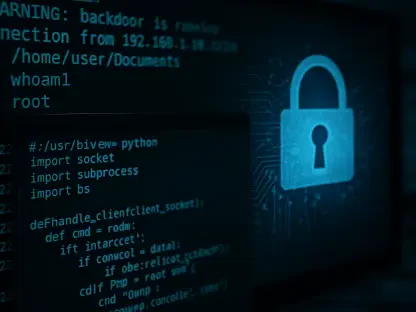Listen to the Article
Early in 2024, 230 million cloud environments were breached by a single compromised AWS access key—one of the largest cloud hacks on record. This was not simply a technical error or human mistake; it was a clear failure to secure the digital workforce that powers today’s world.
Passwords have long been the gatekeepers of digital security, but they are increasingly becoming the weakest link. According to Verizon’s Data Breach Investigations Report, stolen credentials were the #1 attacker action in 2023/24, and the breach vector for 80% of web app attacks—making it clear that traditional authentication methods are no longer enough. The arrival of AI-based cyber threats has further exacerbated the situation, with hackers using sophisticated tactics to crack passwords in mere seconds. Firms like yours now stand at a juncture: Should you cling to outdated authentication methods or embrace the next generation of identity security?
This article seeks to answer this question by exploring why traditional passwords are failing, the rise of passwordless authentication, and how your businesses can implement modern identity security solutions to protect the workforce and customers.
The Problem With Passwords
Apart from the fact that they can be easily guessed or hacked, passwords pose actual security risks to companies. Mismanagement—such as using weak or easily guessable passwords, reusing them across multiple sites, failing to update them regularly, and sharing them insecurely—is all too common. It’s hardly best practice, but it’s not exactly surprising either, considering that almost everyone has been guilty of it.
Despite all of this and years of warnings, many organizations still rely on passwords as their primary form of authentication. However, passwords pose significant risks, including the following:
Human error: As mentioned, employees frequently forget or mishandle passwords, leading to security gaps.
Phishing attacks: Cybercriminals exploit social engineering tactics to steal login credentials. When an attacker gains access, they can compromise the integrity of the website and damage the company’s image by stealing client information, defacing the site, or even rerouting traffic to hostile websites.
High costs: Password resets and IT support for credential recovery drain company resources.
Credential stuffing and brute force attacks: Hackers use automatic robots to attempt to bulk process stolen usernames and passwords in an effort to achieve unauthorized access.
According to a Ponemon Institute and IBM study, the average cost of a data breach reached $4.45 million in 2023, and the most common approach to intrusion was credential-based attacks. As threat actors continue to deploy increasingly sophisticated attack methods, passwords will no longer be the effective means of safeguarding business assets.
Enter Passwordless Authentication
Passwordless authentication—a way to authenticate your identity without having to remember a string of characters—is gaining momentum. The technology behind this innovation varies depending on the provider, but generally, it relies on something you own, such as a phone, or something you are, like your fingerprint or face.
In the past several years, the demand for passwordless authentication has grown exponentially. By 2021, the passwordless market was a staggering $12.79 billion. That is also projected to be well over $53 billion by 2030 as people and organizations become more aware of password vulnerabilities and require better means of protecting their information. Large technology firms like Microsoft and Google already provide passwordless alternatives, a step that encourages businesses to follow suit.
Key passwordless authentication methods include:
Biometric authentication: Fingerprinting, face recognition, voice recognition, physical security token key, magic link, etc.
Multi-factor authentication with passkeys: The use of cryptographic keys on devices to replace passwords.
Smart cards and hardware tokens: These incorporate cryptographic keys for authentication. The user typically inserts the card or connects the token to the device to complete authenticating.
Single Sign-On and federated identity management: Users can access multiple applications securely with one identity verification process.
By eliminating passwords, your company can significantly reduce its attack surface and improve both security and user experience.
The Business Case for Going Passwordless
Businesses have benefited greatly from passwords since the days when there were fewer uses for them and less value in data. However, the value of contemporary electronic information will only increase along with its volume, diversity, and velocity, necessitating a secure-by-design strategy. Passwordless authentication offers businesses a way to stay secure in this new reality, delivering more protection with less friction.
Moving past passwords isn’t just about security—it’s also sound business practice. Passwordless authentication can reduce the risk of breaches, enhance user experience, lower IT costs, aid in compliance, and offer remote and hybrid work security.
Addressing Implementation Hurdles
Just as with any powerful device, passwordless authentication is not plug-and-play—careful implementation is required. The benefits are clear, but companies must navigate some hurdles to ensure a seamless transition. These may include:
Setup costs: Installing biometric technology or hardware tokens requires capital.
User adoption resistance: Employees accustomed to traditional passwords may resist change.
Interoperability issues: Some passwordless authentication methods may also face compatibility issues with legacy applications, operating systems, or devices. This can render integration and uptake in a range of digital contexts difficult.
To combat these concerns, organizations need to take a phased approach, like educating users about the benefits while rolling out passwordless solutions in stages. Working with identity security vendors who offer seamless integration can also accelerate adoption.
In Conclusion
Going passwordless is not an option, but a must for today’s companies. Passwordless authentication and advanced identity security technology not only boost user convenience but also protect your business against cyber threats.
IT executives, security professionals, and business leaders, it is time to take action. Reexamine your current authentication procedure, research passwordless solutions, and implement a strategy that future-proofs your organization’s security.
The transition may require investment and planning, but the long-term benefits—enhanced security, lower costs, and a better user experience—far outweigh the challenges.









